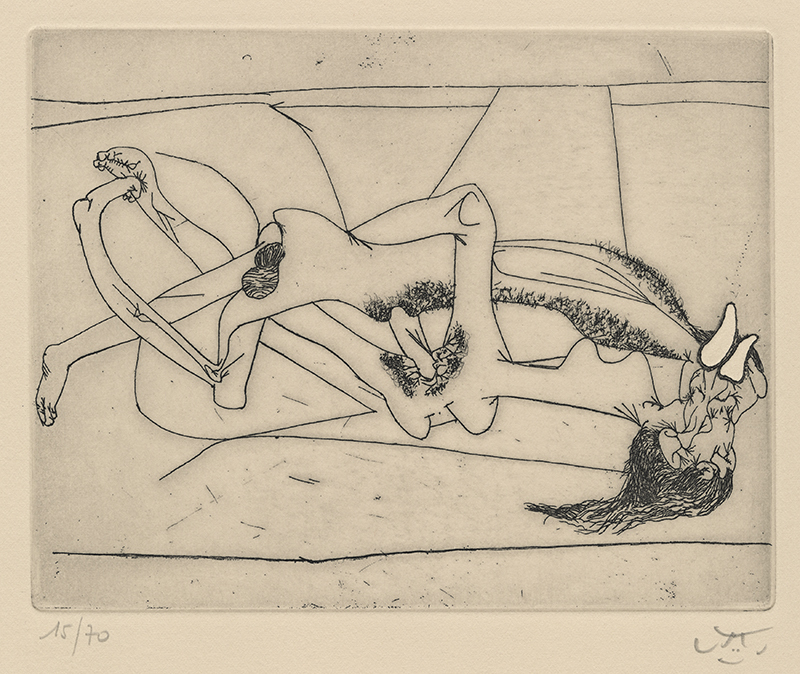
19th, 20th & 21st Century Fine Prints
707-546-7352 · fax 707-546-7924 · web: www.annexgalleries.com · email: artannex@aol.com
(Untitled) - from The New School Portfolio of 10 etchings by Roberto Sebastian Matta

(Untitled) - from The New School Portfolio of 10 etchings
Roberto Sebastian Matta
(Untitled) - from The New School Portfolio of 10 etchings
Roberto Sebastian Matta
1911 - 2002 (biography)In 1939 Roberto Matta, like many non-conformist artists in Europe just prior to World War II, had fled to the United States to escape the rising tide of totalitarianism and settled in New York, where Surrealism and other subversive art genres were generally embraced. Four years later he began working in the experiemental printmaking workshop of British artist Stanley William Hayter. Atelier 17 was then a part of the New School for Social Research, which at the time was host to many European artists who had fled fascist persecution.
Roberto Matta, a Chilean native who had first moved to Europe to expand his studies in architecture in 1933, was intrigued by the Surrealist movement and had abandonded his original plan, instead devoting himself to painting. By the time he entered Atelier 17 in 1943 he had established himself as a leading Surrealist, and one of the very few Chilean Modernists to exhibit in the broader art world.
While studying with Hayter he was approached by the art collector Bernard Reis to create a suite of etchings. Matta created a collection of Surrealist erotic images that inadvertantly remained unpublished due to their explicitly sexual nature. In all, only around five trial proofs were printed of each plate and given to a handful of collectors, including Reis; the plates then went into storage and were eventally split up, with seven remaining in the US and three being sent to Paris at some unknown date.
In 1975 Roland Sabatier published a catalogue of Matta's early graphic works, which only included the 7 plates in the US. Between 1978 and 1979 Matta relocated the last three plates and collaborated with Sabatier to formally publish the suite.
